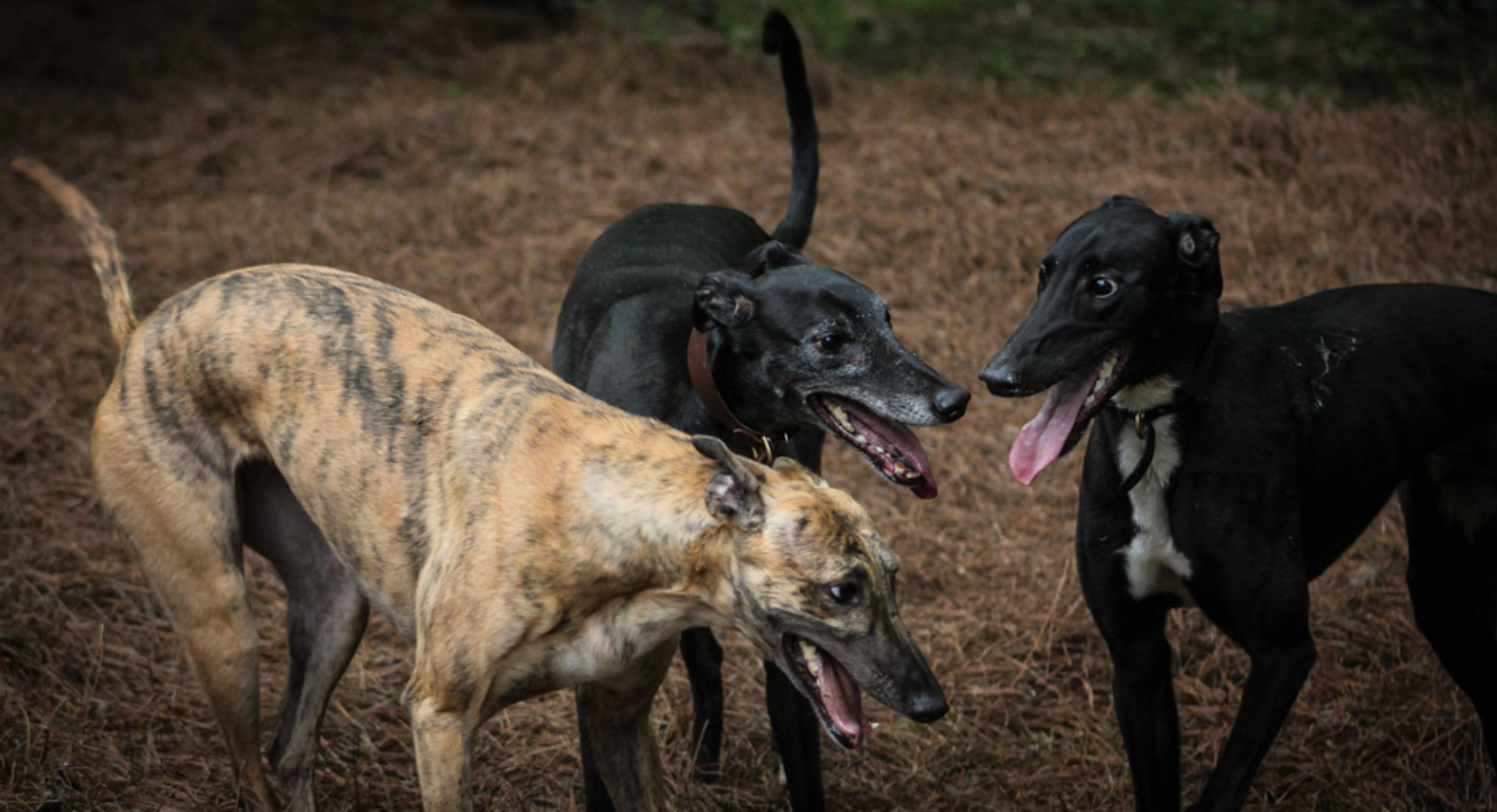I hope you all found the lure coursing piece useful and fun. Today I want to discuss sprint racing, also know as LGRA as it is organized by the large gazehound racing association.
LGRA is a favorite of mine. I love the raw speed that sprint racing provides. I also like LGRA because the fastest dog wins, which removes any subjectivity from the event. However, it is not perfect. Today I will talk about what LGRA racing is and what you should think about if you decide this is the sport for you and your hound.
First, make sure you are aware of any injuries your Greyhound may have had on the pro track. Make sure that your Greyhound is at racing weight and well conditioned. As always, please check with your vet before beginning in amateur running sports to make sure your Greyhound is healthy enough to sustain these activities.
OK, now what is LGRA? LGRA is a sprint race of 200 yards with three programs. Generally four dogs compete in each race, this number can change depending on the entrants. Dogs are usually boxed at the start just like in pro racing and then they chase a drag lure for 200 yards. The hound that gets to the finish line first wins the race. LGRA is simple and a blast to watch. My dogs love it! Based on the number of entries, the dogs are awarded points. The larger the entry the more points for the winner and placing dogs. Once your dog has accumulated enough points they are able to obtain titles. (I have never seen a Greyhound get excited about a title, but the competition is fun for the owners.)

Besides having a fit dog, you need a muzzle and racing blankets for LGRA (1-4). Usually there are plenty of experienced Greyhound people at these events and will allow you to borrow blankets or muzzles if needed. Prior to arriving at the meet you need to contact the race secretary to register your dog and check if they need a certification run. Dogs that have raced in NOTRA or have raced professionally generally do not need a certification. However, it might be helpful to run some practice runs prior to your official meet to see how things work and get the hang of boxing your Greyhound.
I overall enjoy LGRA racing. I like that LGRA focuses on raw speed – the Greyhound does not have to consider manipulating turns or when is the best time to really turn up the speed. There are two things that I wish were different. I wish the length of the sprint were longer. I feel that Greyhounds are just getting up to top speed when the race is over and another 100 yards would be better for a lot of Greyhounds. I also wish there was a trap for the lure. When the lure stops, after the sprint with plenty of run out (area for the Greyhound to decelerate) all the dogs clobber the lure. Removing a Greyhound off a lure is very difficult and I have a very small bitch. I cannot imagine having to manipulate a 65+ pound Greyhound off a lure!
LGRA is rather safe, as it is a straight line without any turns; however, these Greyhounds are running hard and as with any strenuous athletic activity, injuries can occur. As always check your Greyhound’s feet after each run. If the ground is hard and you are wrapping pads, it is important to remove the vetrap after each run to make sure their feet are OK. I generally leave the elastikon in place if they haven’t run it off.
LGRA is a great sport for retired racers. It focuses on the Greyhound’s raw speed and is a blast to watch. I hope you now know a little more about LGRA and how much fun it is! Tune in next week for another post on amateur running sports.
Feature Photo credit: Carl Doby

